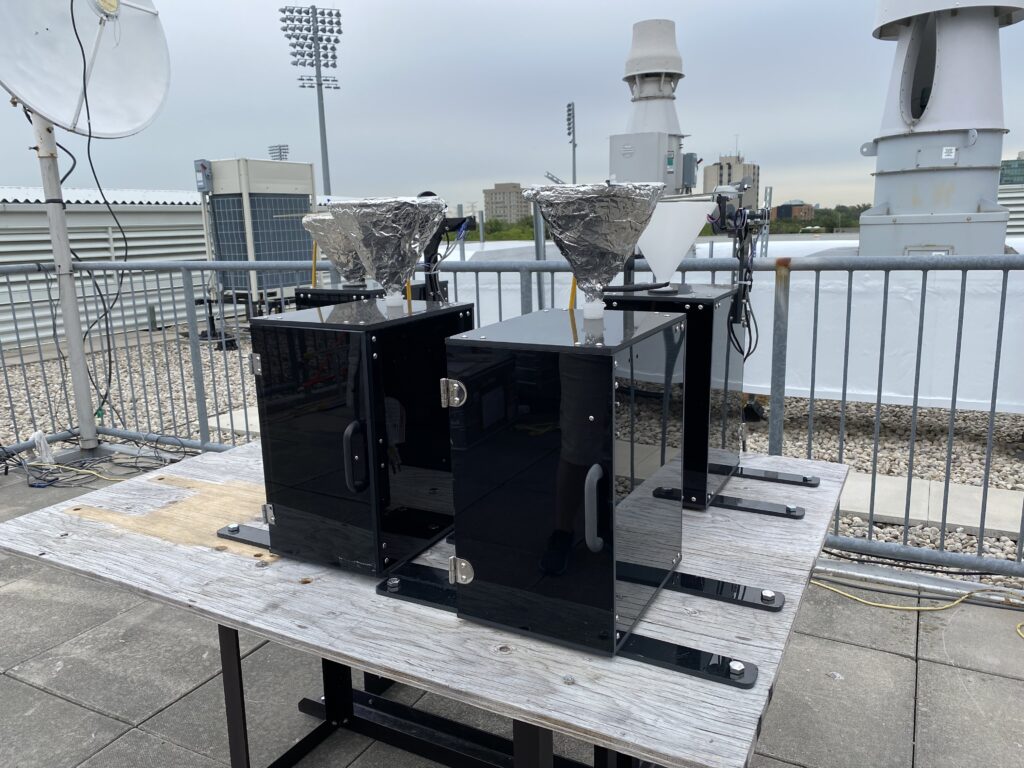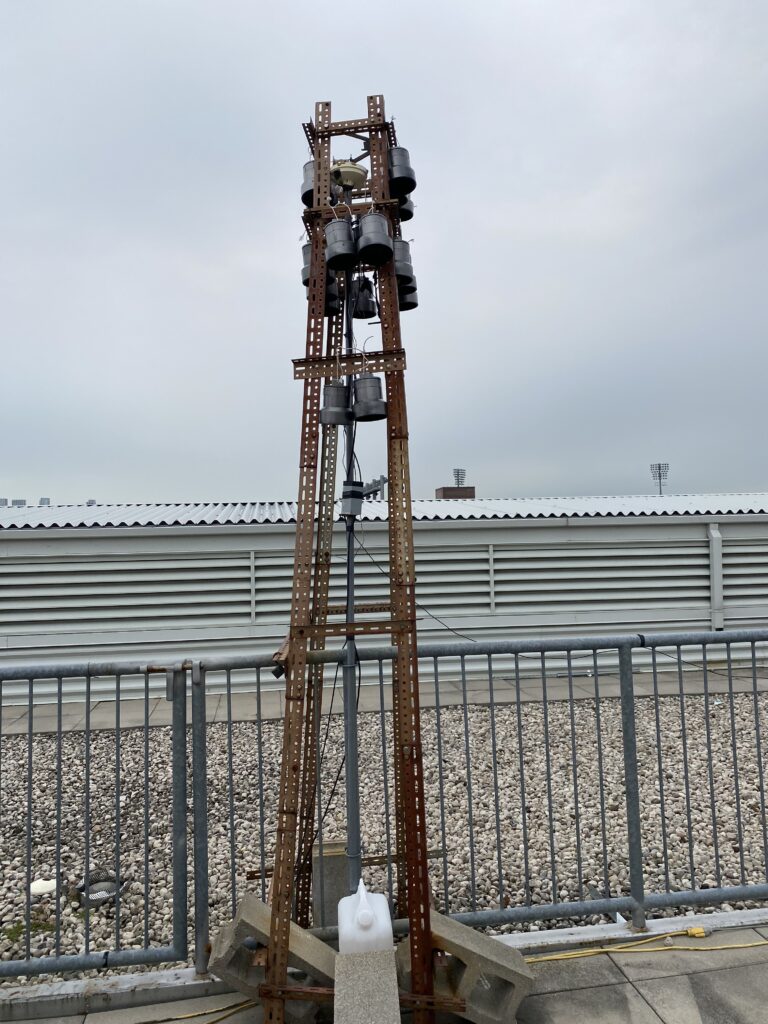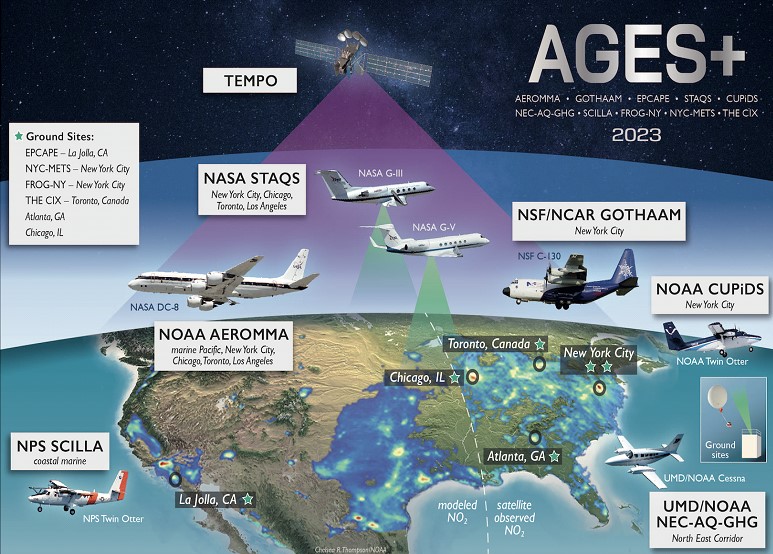Media release from August 3, 2023
As Toronto gets hotter, muggier and wildfire smoke increasingly wafts through the atmosphere, researchers at York University are leading a team of atmospheric scientists in testing the city’s air pollution from their rooftop Air Quality Research Station for six weeks this summer.

Preliminary results show the negative impacts on Toronto’s air quality caused by wildfire smoke. Although Toronto’s air pollution has generally been improving over the past few decades, smoke in the city is reversing these improvements.
The research project, Toronto Halogens, Emissions, Contaminants, and Inorganics eXperiment (THE CIX), with science lead Associate Professor Cora Young and logistics lead Assistant Professor Trevor VandenBoer, both of York University’s Faculty of Science, is designed to analyze areas of uncertainty in the air we breathe to better understand what is contributing to the city's air pollution.
One of the things the team hopes to understand, is how a soupy mix of trace chemicals will sometimes combine to create little understood, new and changing threats that can contribute to worse air quality, including emissions from products we use every day, such as paint and pesticides and even perfume, greenhouse gases, as well as perfluorocarboxylic acids (known as “forever chemicals”), and particulate matter - tiny particles of smoke, dust, pollen, emissions and fumes.
“There is still so much we don’t know about what’s impacting the air we breathe, and until we do, it’s difficult to effectively target contaminants that are affecting our air quality now and into the future,” says Young.

This project is important as it allows us to take a robust look at all the pollutants circulating in the air. The Montreal Protocol was successful in helping to fix the ozone layer above us because we knew what to target, but ground-level ozone and other contaminants can still be an issue, particularly spiking on hot summer days, creating poor air quality which can impact people’s health."
Ground-level ozone forms when nitrogen dioxide mixes with volatile organic compounds (VOCs) and sunlight. Although emissions of VOCs from fossil fuels have been declining, consumer and industrial volatile chemical products are an increasing, but understudied, source of VOCs.
THE CIX project is part of an international field campaign – Atmospheric Emissions and Reactions Observed from Megacities to Marine Areas (AEROMMA) – across North America organized by the NASA and the National Oceanic and Atmospheric Administration (NOAA) with projects in New York City, Chicago, Los Angeles, as well as Toronto. NOAA and NASA launched their massive air quality research summer campaign today with scientists from NOAA, NASA and 21 universities from three countries. State-of-the-art instruments are being deployed in multiple, coordinated research campaigns this month, including at York University, to investigate how air pollution sources have shifted over recent decades.
At York University, researchers from York U, the University of Toronto, University of York (UK), the University of British Columbia, and Environment and Climate Change Canada are already taking readings from a room packed with unique, sophisticated and highly sensitive equipment – some of which was shipped from the UK and BC – on the roof of the Petrie Science Building on York’s Keele Campus.
The goal of the campaign is to assess air quality across urban centres to understand what is impacting air pollution and how it’s changing. THE CIX team hopes to better understand several areas that contribute to air pollution in the GTA.
In addition to the rooftop measurements, the NASA DC-8 aircraft, a flying science laboratory packed with instruments, will cruise over campus this August to take air quality readings from higher in the atmosphere to compare with the rooftop readings.
Data collected by THE CIX will also be compared with key air pollution observations from the recently launched NASA TEMPO instrument, the first geostationary satellite dedicated to air quality over North America.

